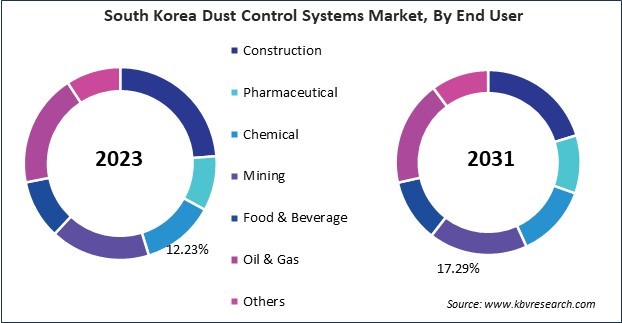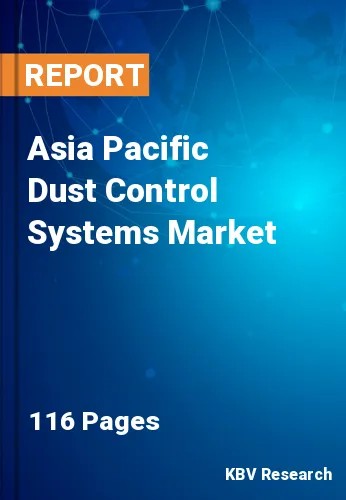The Asia Pacific Dust Control Systems Market would witness market growth of 5.7% CAGR during the forecast period (2024-2031).
The China market dominated the Asia Pacific Dust Control Systems Market by Country in 2023, and would continue to be a dominant market till 2031; thereby, achieving a market value of $3,027.9 million by 2031. The Japan market is registering a CAGR of 5% during (2024 - 2031). Additionally, The India market would showcase a CAGR of 6.4% during (2024 - 2031).

Vehicle traffic on unpaved roads, construction sites, and industrial facilities can generate fugitive dust emissions, contributing to air pollution and visibility impairment. Dust control solutions such as road dust suppressants, dust palliatives, and road watering techniques minimize dust generation, improve road safety, and enhance environmental quality.
In addition, the market is characterized by ongoing technological advancements, product innovations, and industry trends reshaping how dust emissions are managed and controlled. Manufacturers are developing advanced dust suppression technologies utilizing chemical additives, polymers, surfactants, and wetting agents to improve the effectiveness of dust control measures. These innovative solutions offer superior dust suppression capabilities, longer-lasting performance, and reduced water usage compared to traditional methods.
Due to the increasing demand for packaged and processed food items, Australia's food and beverage industry has grown, resulting in the construction of new facilities and the expansion of existing ones. According to the Australian Bureau of Statistics data, in the 2020–21 fiscal year, foods and non-alcoholic beverages weighing 14.7 million tonnes were sold through specialty food stores, grocery stores, supermarkets, and fresh food sectors. In comparison to the preceding 12-month period (2019–20), this was up 1.4% (204,100 tonnes) and up 4.9% (686,000 tonnes) from 2018–19. Additionally, China's chemical industry has benefited from the country's industrial expansion and manufacturing growth, driven by robust domestic demand and export-oriented production. As per the data from the State Council of China, in 2022, the investment in chemical raw materials and product manufacturing jumped 19 percent year on year, 7.4 percentage points higher than the average level of all industries. Hence, the rising chemical and food & beverage sector in Asia Pacific is expected to increase the demand for dust control systems in the region.
Free Valuable Insights: The Global Dust Control Systems Market is Predict to reach USD 28.8 Billion by 2031, at a CAGR of 5.3%
Based on Product, the market is segmented into Wet (Wet Electrostatic Precipitators (WESPs), and Wet Scrubbers), and Dry (Bag Dust Collectors, Vacuum Dust Collectors, Electrostatic Dust Collectors, and Others). Based on End User, the market is segmented into Construction, Pharmaceutical, Chemical, Mining, Food & Beverage, Oil & Gas, and Others. Based on countries, the market is segmented into China, Japan, India, South Korea, Singapore, Malaysia, and Rest of Asia Pacific.
By Product
By End User
By Country
Our team of dedicated experts can provide you with attractive expansion opportunities for your business.

